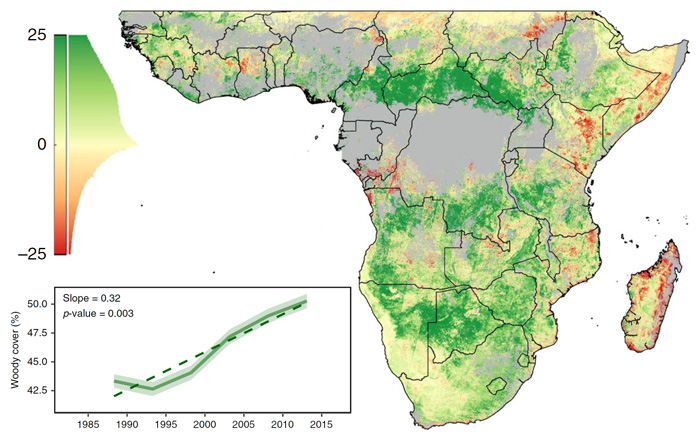| Follow @co2science |
Paper Reviewed
Venter, Z.S., Cramer, M.D. and Hawkins, H.-J. 2018. Drivers of woody plant encroachment over Africa. Nature Communications 9: 2272, DOI: 10.1038/s41467-018-04616-8.
Over the past two decades we have reviewed numerous studies that have documented a greening trend in vegetation across Africa (see the long list of reviews archived in our Subject Index under the heading Biospheric Productivity: Africa). The present review is the newest to demonstrate a long-term enhancement in vegetative productivity across this vast continent in recent years.
Focusing on the region of sub-Saharan Africa, Venter et al. (2018) examined three decades of satellite reflectance data in an effort to identify changes in fractional woody plant cover over the period 1986-2016. Their results indicated, as shown in the figure below, that woody vegetation cover increased by eight percent during this period, which findings, in the words of the authors, "confirm global greening trends." Indeed they do; and this positive trend in woody cover has occurred despite all the natural and anthropogenic pressures exerted upon this region, including war, deforestation and changes in climate.

Figure 1. Change in woody plant cover over sub-Saharan Africa based on satellite observations of 30 years of fractional woody plant cover (1986-2016). The histograms and adjacent color scale indicate data distributions. The insert indicates the percent change in wood cover for the entire region by year, revealing an approximate eight percent increase over the length of the study. Grey areas were masked from the analysis and represent urban surfaces, wetland, cropland, and forest (areas >40% cover by trees >5 m). Source: Venter et al. (2018).




